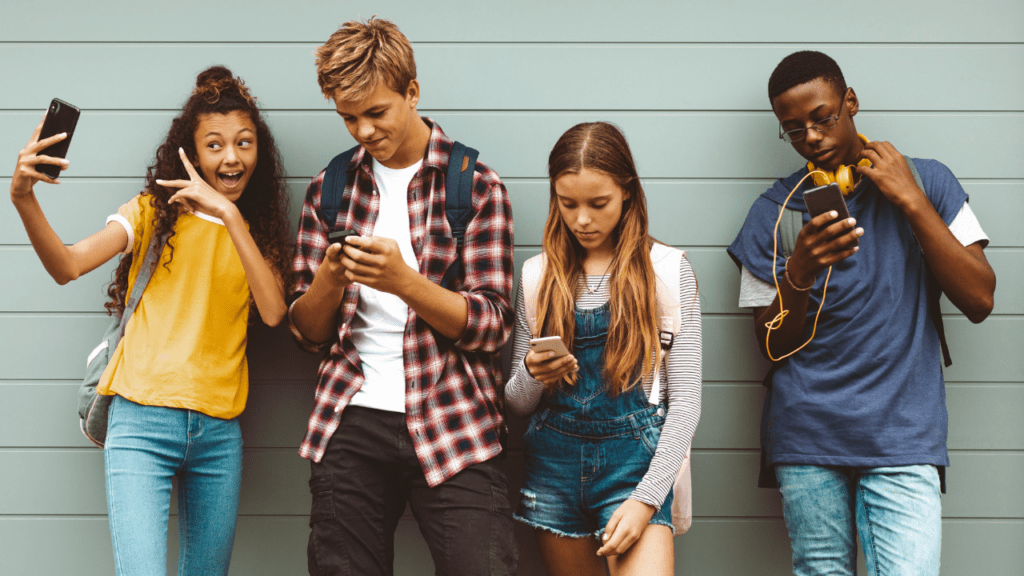
Please stop yourself from saying, “This could never happen to me or my family.” We can all have vulnerable blindspots when it comes to those we love being exploited or endangered. Even the best trained educators can be manipulated into making a mistake.
Today’s guest is Clayton Cranford. Clayton is the founder of Cyber Safety Cop. He is a retired sergeant from the Orange County Sheriff's Department who served as a school resource officer, juvenile investigator, and behavioral threat assessor. He is one of the nation’s leading law enforcement educators on social media, child safety, teen drug abuse prevention, and behavioral threat assessments. He is the author of the definitive parent guide to online safety, Parenting in a Digital World.
“It all amounted to a simple and common narrative: a good kid made a bad choice and a parent who had no idea what was going on.” - Clayton Cranford Share on XShow Notes:

- [1:10] – Clayton shares his background as a school resource officer in 2012, which was the year that saw the adoption of smartphones by teens.
- [2:48] – It all amounts to a simple and common narrative: a good kid made a bad choice and a parent who had no idea what was going on.
- [4:08] – The turning point in Clayton’s career was his first day as a school resource officer.
- [6:14] – There are things that parents can do to absolutely make a difference.
- [8:20] – Technology has changed our kids, particularly their mental health.
- [10:06] – Schools and counselors are alarmed at the number of children who are struggling with anxiety and depression.
- [12:50] – Clayton shares some of the data that shows an increase in depression and suicidal ideation in teens.
- [15:40] – Parents could come together to make real change, but oftentimes, parents don’t often make a change until it's too late.
- [17:51] – A lot of parents are using devices to help their kids regulate their emotions.
- [21:06] – Boys tend to lean more into video games, but girls tend to spend more time on social media. There are differences in the effect on their brains.
- [24:52] – When it comes to friends, teens have gone from quality to quantity.
- [27:02] – Every new generation that is now exposed to social media from the time they are born are experiencing severe mental health concerns.
- [30:03] – Parenting styles have changed through each generation.
- [32:03] – Why are parents giving their children phones so young?
- [36:41] – Clayton says not to give your child a smartphone until high school.
- [37:48] – There are apps that you can put on your child’s phone that will help regulate screen time.
- [39:45] – Clayton discourages parents from putting technology, particularly mobile devices in your child’s bedroom.
- [40:49] – Parenting in a digital world is more about how to talk to your children than telling them what they should and shouldn't do.
- [42:16] – Snapchat is an especially big problem. How can we have this conversation?
- [44:51] – The number 1 app that puts drugs in a child’s hands is Snapchat.
- [45:50] – Your relationship with your child is important, but you need to be aware of what each app can do and what it can lead to.
- [47:10] – Parents are saying that they are glad they didn’t have the internet when they were growing up.
- [49:02] – Interacting online takes away the sense of consequence that we feel when we interact in person.
- [52:10] – The way kids think is normal. But they don’t understand the consequences of their online behavior.
Thanks for joining us on Easy Prey. Be sure to subscribe to our podcast on iTunes and leave a nice review.
Links and Resources:
- Podcast Web Page
- Facebook Page
- whatismyipaddress.com
- Easy Prey on Instagram
- Easy Prey on Twitter
- Easy Prey on LinkedIn
- Easy Prey on YouTube
- Easy Prey on Pinterest
- Cyber Safety Cop Website
Transcript:
Clayton, thank you so much for coming on the Easy Prey Podcast today.
Thanks for having me. I appreciate it.
Can you give myself and the audience a little bit of background about who you are and what you do?
My name is Clayton Cranford. I am a retired sergeant from the Orange County Sheriff’s Department. I did 20 years in law enforcement. The majority of that career—the best part of my career—was working with students and families. I was a school resource officer in southern Orange County, California, City of Rancho Santa Margarita.
I had 14,000 students in that city. I was the one and only school resource officer, so I was very busy handling issues. This was in 2012, which incidentally is the major adoption of smartphones by teens. 2010 was kind of the iPhone out there, it was gaining traction, but the majority of children who had phones had flip phones. Then about 2012, it flipped where the majority had smartphones.
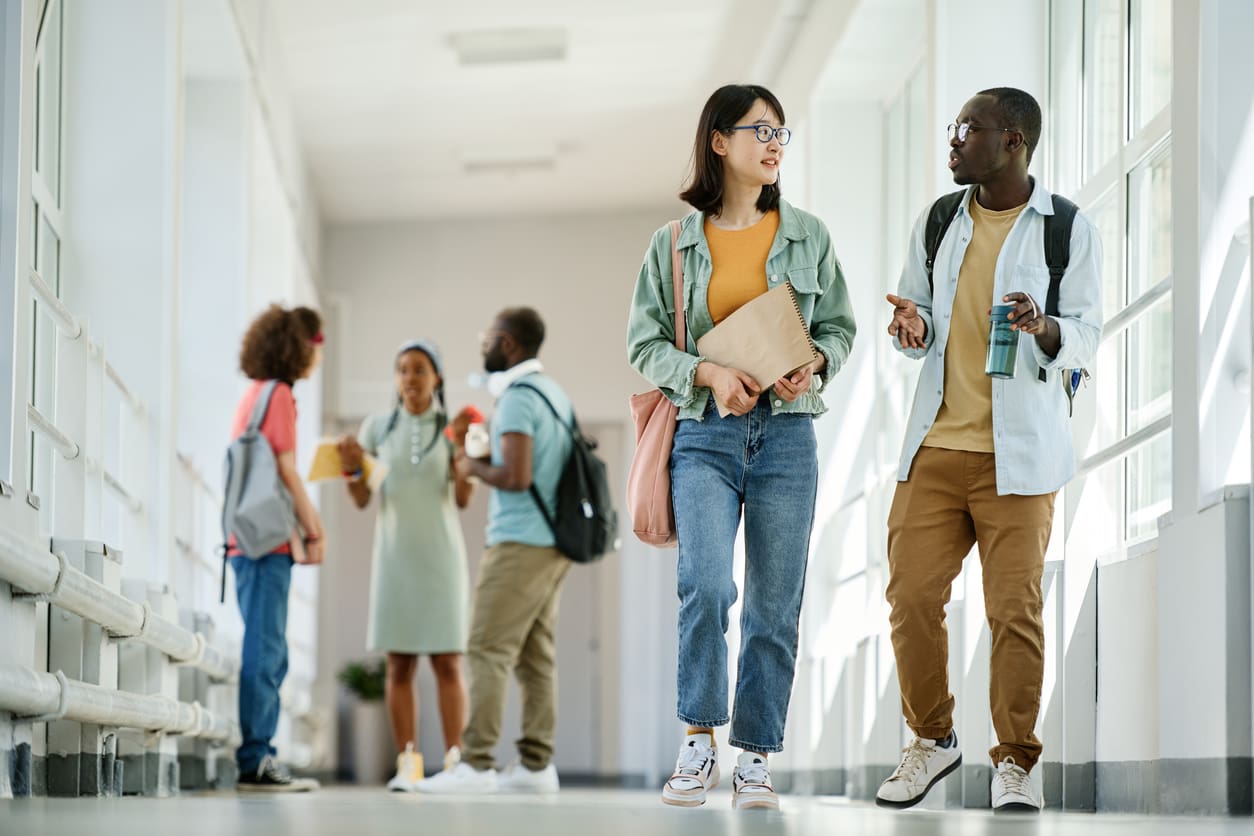
As it was happening, I was witnessing what Jonathan Haidt in his book, Anxious Generation, calls the rewiring of our children’s brains. I was dealing with those things, and all those things amounted to a very common narrative: a good kid who made a bad choice and a parent who had no idea what was going on.
As I saw these things happening, I’m like, “Hmm.” Some of the cases that I was dealing with were really heartbreaking, and I’m a parent too. About this time, I had two boys who were in their middle school years. This was very personal to me. It’s also happening in my home.
But as a parent sitting across from another parent and them just weeping and asking for guidance in a situation that can’t be undone, I just said I’m not interested in helping pick up the pieces. I’m really interested in giving parents the tools that they need to be an effective parent in the digital world, and also talk to students about the choices that they’re making and how to be safer.
I’m not interested in helping pick up the pieces. I’m really interested in giving parents the tools that they need to be an effective parent in the digital world, and also talk to students about the choices that they’re making and… Share on XIt led to me writing a book called Parenting in the Digital World, 2015. Since then, I travel all over the United States speaking at schools, to students K-12 now, which is interesting because I didn’t start talking to children that young. This is something that’s happened recently, but kindergartner all the way through 12th grade and then talking to parents. That’s where this all began.
I know you’re interested in maybe knowing what was the real turning point for me. The turning point for me was literally my first day as a school resource officer. I walked into my intermediate school here in Rancho Santa Margarita, and it was, like, a pretty big school, like 1200 students. I was greeted by the front desk person who said, “Deputy Cranford, we’re so glad you’re here.” But she said it more hysterically. She’s like, “We’re so glad you’re here because there’s a student waiting for you back in your office.”
I go back to my office and there’s this little seventh-grade, 12-year-old girl sitting in one of the chairs with her knees tucked up under her chin. She’s holding herself crying, and there was a counselor back there waiting for me. I learned that over the summer, her then-sixth-grade boyfriend asked her to send him a nude image, which if you don’t know, this is what kids do to prove they’re in a committed relationship.
Unfortunately she did, and all relationships in sixth grade break up eventually. Of course that image and breakup goes on forever. The night and nights leading up to her first day in seventh grade, she had multiple messages from boys from that school, friends of his, messaging her saying, “We have an image of you. Send us a nude image too.”
Just imagine if you’re that little 12-year-old girl walking in your first day of seventh grade thinking everybody in the school has this image of me. The fact that she got out of bed that morning, she’s a brave girl, but that’s where I found her. Her life was imploding. The next steps were calling those boys in, making them delete the image and there was school discipline involved.
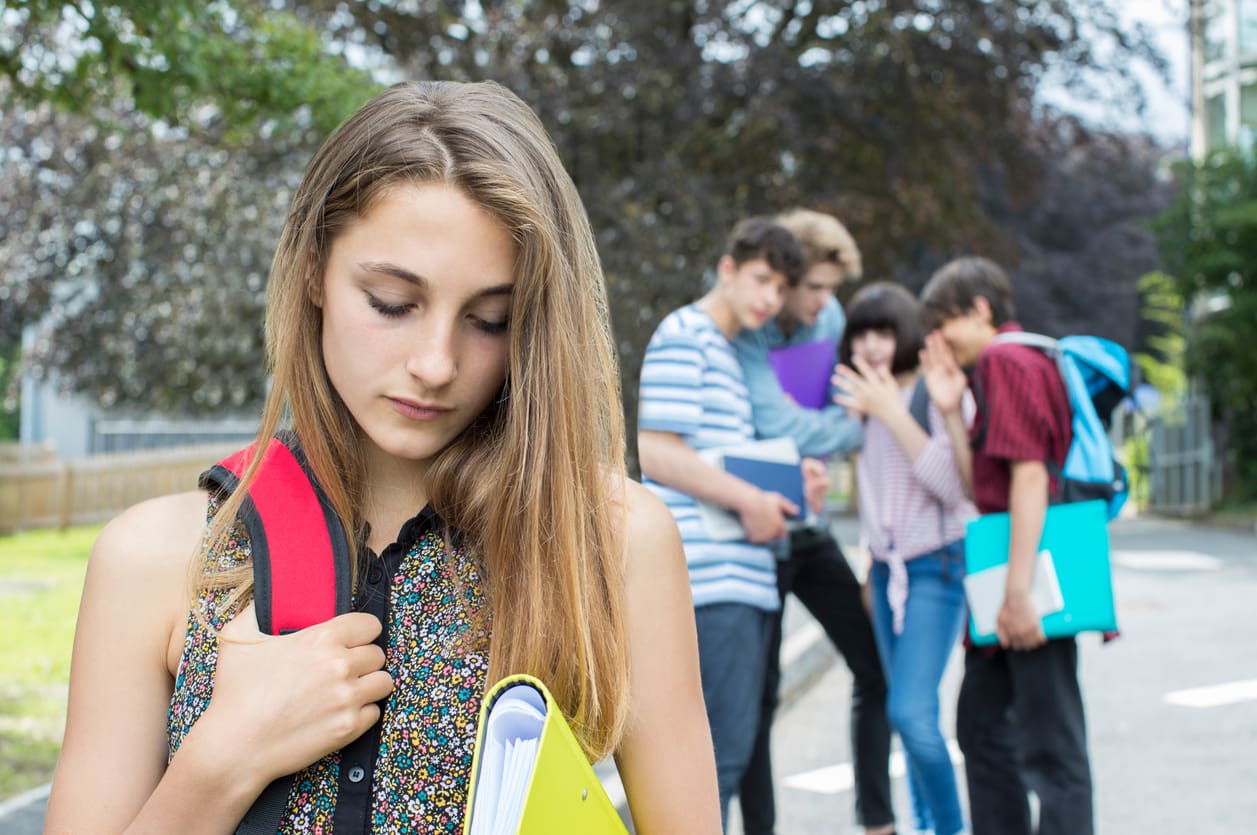
What really made the impression on me was when I sat down with her mom and I had this conversation with her mom. Again, a conversation I’d had over and over again with my parents. That mom looked at me and she said, “How do we keep this from happening? Or how do we keep this from happening again?”
I didn’t have a good answer for her just then. I was new to the position and I realized parents need that answer and not just again, but to keep it from ever happening. What I learned was that there are things that parents can do to absolutely make a difference. Now, we can’t say we can make it 100% safe—there’s no such thing—but we can do a lot. That’s been my goal since then.
We’ve talked to hundreds of thousands of students, tens of thousands of parents over the last decade and we have a strong educational piece on our website for parents and students, so we’re just looking for ways to make a difference. And it’s important for us to do it now because our kids’ mental health, which is tightly tied to this technology, is collapsing. I’m sure we’ll talk more about that. But it’s something that we just can’t ignore anymore. If we do, we’re doing it at our children’s peril, frankly.
What is the best process for you and I to talk about this here? Should we talk about it in terms of platforms and issues or should we start working through age groups? Where would you normally go in this discussion? Because I can think of like, “OK, let’s start at kindergarten.” We now have to start talking about these things because I see kids and toddlers know how to use phones.
I think maybe to start off, maybe let’s talk about how we got here. I want to talk about the mental health issue and I want to talk about sexual exploitation. I’m really burdened by what’s happening to our young people, and I have parents calling me on a weekly basis saying, “This happened to my kid.” It’s also coupled with the mental health issue.
I think maybe we should talk about how this technology has changed our kids and its effects, and us as parents are facilitating this. Because our kids aren’t getting jobs and buying their own phones. We’re doing it for them. Like you said, kindergartner, how does a kindergartner get a phone?
Because I think the important thing is when you and I were in school, maybe we had a beeper when we were in college.
I did have a pager.
Our youth experience, we were pre-Internet or right around the cusp of when the Internet came out, so our youth is fundamentally different. If we can’t do what we did, we can’t use the rules that we did when we were kids.
Our children’s generation—like my boys are now 21 and 23 and they’re in college; they’re the Gen Z crowd generation—they’re radically different from us in the way they were raised. There’s a really terrific book called The Anxious Generation by Jonathan Haidt and also iGen by Dr. Twenge. Both of them basically explain how the technology—the smartphones and social media—has really fundamentally changed our children. In just so many ways, it’s hard to wrap your brain around.
I work with a lot of school counselors and a lot of school psychologists. They say, “We are alarmed at the number of children who are struggling with anxiety and depression,” which are related mental health issues. The schools are trying to bring more counselors in and they’re trying to deal with these kids who are contemplating suicide, who say they are hopeless and lonely. What happened here?
When we look at the data, because children are given a survey in public schools every year and it’s a standardized thing that they give. Basically, a lot of the questions are like, “Within the last 30 days have you had thoughts of loneliness?” They have a bunch of questions like, “In the last 30 days, have you smoked a cigarette?” That’s one of the ways we also know about tobacco use with teens as well.
This is something that’s gone back. I seem to vaguely remember in high school that I was doing this, however many generations. […]
We have data for when we were kids, like it goes back a long way. This is self-reporting. This is what the kids are saying about themselves. We look at before 2010, so 2010 is the beginning of the shift to smartphones, but 2012–2014 is like when 80%-plus of teens were on smartphones.
The rates of anxiety and depression were flat. It was pretty flat like this. For boys, it was really low. Girls have always been higher by something like 5%.Of teens from 2004–2010, boys were actually experiencing depressive disorder. Girls were, like, somewhere between 10–12, right in there.
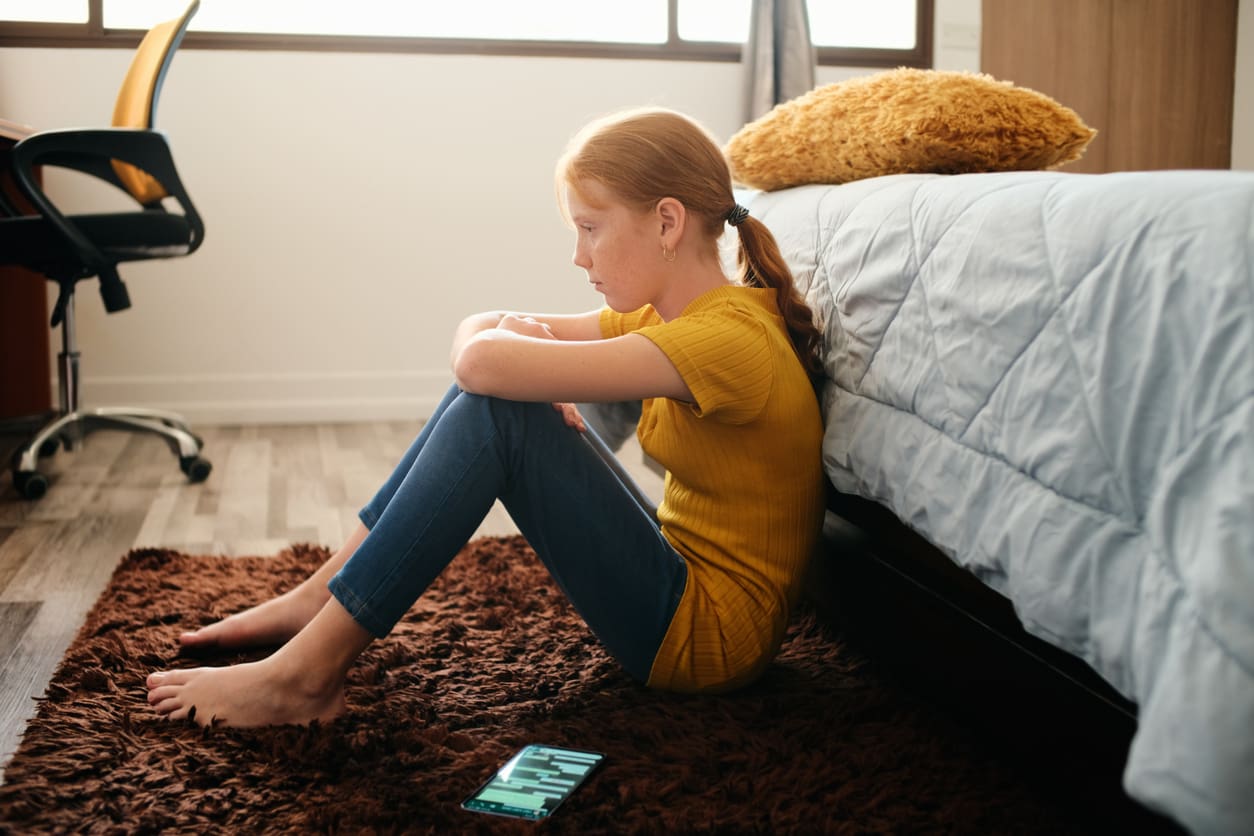
But then 2010 comes around. It looks like a hockey stick. It was like this. Right now in 2020, almost 30% of girls say that they report having a depressive disorder. That’s, like, deep depression for more than a couple of weeks. That’s not just, like, feeling sad one day. It’s consistent, clinically, probably diagnosable depression.
That went up 145% since 2010, and boys, although the curve isn’t quite as dramatic because they already started out very low so now they’re around 12%—they were at 5%—12%. It’s like 161% increase for boys. Then we translate that into what else does that mean?
That also includes huge increases in non-suicidal self-injury. That was something that I got exposed to as a school resource officer that I didn’t know anything about. Children who are injuring themselves because it’s a way of dealing with their emotions is a type of emotional regulation, but it’s cutting. For girls, that’s 188%, for boys it’s up 49% since 2010.
We had a girl who was posting this on Instagram. A lot of kids talk about self-harm. It’s the kind of drama that kids talk about on social media, which isn’t unusual, which is strange. You think talking about hurting yourself would be unusual, but so much on social media now.
This girl then posts this image of her inner forearm just slashed into pieces, very graphic. One of the kids at the school brought it to my attention. We call this girl in, sit down with a counselor—she’s not a risk to kill herself. But this is a very compulsive situation that she’s dealing with, and is just struggling with anxiety, depression.
Then we call that mom in. We first talked to the mom, prep her for what’s going to happen. Then we went into the room with her, and that girl slid the long sleeves of her shirt up. To hear the gasp of horror and despair emanating from a parent like that, everyone in that room felt sick.
Those scars, they don’t just go away. Those scars are metaphorically not just on her arm, but that soul of that parent, because that parent’s like, “I failed my child. I should have known this was going on.” If she had looked at her child’s Instagram for even a moment, she would have known. Some kids really struggle. No kids are unaffected. All kids on social media are affected. It’s changing the way they socialize. It increases anxiety, for sure. But some kids really struggle.
Some kids really struggle. No kids are unaffected. All kids on social media are affected. It’s changing the way they socialize. It increases anxiety, for sure. But some kids really struggle. -Clayton Cranford Share on XI was talking to a friend today—actually this morning—and he’s like, “What do we have to do to get apathetic parents involved?” I said when enough parents have children who are attempting suicide, then parents will coalesce and they’ll say, “We need to stop this. We need to change what’s happening here.” Because we have parents who are giving their little kids a phone because all the other kids in the room and the class have a phone. They feel like, “If I don’t get my kid a phone, they’re going to be ostracized.”
The flip side of that would be parents coming together and saying, “Hey, as a parent group at this school, we’re going to say no smartphones, no phones for our kids until they’re in middle school, and no smartphones for our kids until they’re in high school.” Parents can do that. Then the next thing would be no social media until they’re 16.
I see that there are a lot of parent groups, and you have a lot of parents who are like those who have young children who don’t have phones yet. They’re like, yes, because they don’t have anything at stake. They have other parents who have kids who have phones already and they’re like, “I don’t know if I can do that. I don’t know if I can take it all back.”
I have parents who have children who are victims of online sexual exploitation, or kids who’ve attempted or hurt themselves to suicide or hurt themselves, and they have no compunction about taking it all away. They don’t even care anymore. Your safety and your health is more important to me than you not connecting to your friends on Snapchat. This hasn’t happened to their kid yet, as much as parents who have had it happen to their kid. That’s really what we need.
We can turn this mental health problem around with our kids. It starts with the introduction of social media in these devices in our children’s lives. I’m sorry that was very long-winded, but I think that’s fundamentally one of the huge problems that we have and one of the biggest hurdles that we have to get over.
What’s your impression of why social media causes mental health crisis, anxiety?
It starts early with young kids. A lot of parents are using devices to help their children regulate their emotions. You have a kid who’s acting out, who’s unhappy, who’s sad, or just being a regular kid, which is squawky or whatever. They give them an iPad and it’s like a 180. The kid’s crying. “I got an iPad and now I’m all good.” I totally get it.
As a parent, you’re overwhelmed. You got a lot going on. If there’s something that you could just give to basically pacifying your child, why wouldn’t you?
When you’re out at a restaurant and your kid has a meltdown, which happens to every kid in every restaurant ever. I don’t have kids, but I can understand the feeling of, “Oh gosh, everybody’s looking at me. I must be a horrible parent. Here’s this thing that I can give my kid and instantaneously, it’s not an issue.”
Even the American Academy of Pediatrics says if your child’s under 18 months, zero screens—zero. -Clayton Cranford Share on XWhy wouldn’t you? It makes perfect sense. Even the American Academy of Pediatrics says if your child’s under 18 months, zero screens—zero. But I’m sure my dad in the late 1970s went on a family car trip to where we’re going up to Yosemite or something, he would have liked to have not had to spend a lot of time looking in the rearview mirror at me and my brothers and saying, “Stop touching your brother,” or reaching back there with his arm trying to smack one of us.
I’m sure he would have liked to just give us phones or a screen and just have a peaceful drive. It just wasn’t an option. We’re giving these devices to the kids to sublimate them, to pacify them, but really what’s happening here is that our children are never learning to deal with their emotions. There’s no emotional regulation happening.
We’re giving these devices to the kids to sublimate them, to pacify them, but really what’s happening here is that our children are never learning to deal with their emotions. There’s no emotional regulation happening. -Clayton… Share on XThen we have teens, the feelings of anxiety or negative emotions. This is interesting. What we called negative emotions would be like anxiety, fear, shame; these are not a bug. These are a feature. There’s a reason why we’re feeling these things and it’s not all bad. In fact, it’s good.
When you do something wrong, you should feel shame. If you didn’t do well on your test at school and you didn’t get a good score, you’re like, “I feel horrible that I didn’t do well. I’m going to work harder next time.” “I’m procrastinating for that test. I’m getting anxious. I need to study.”
These are things that are good. But what’s happened is that as a society to some degree we were saying negative emotions are bad, all of them, so you should never feel them. It’s better to get in front of a device or use these devices to sublimate. Girls are on social media because they’re more social, want to socially interact, and boys are more likely to be on YouTube or playing games.
But they kind of work in different ways. Playing games does mute your emotions, neurologically, the way it works. If you want to know more about this, there’s a book called The Healthy Gamer that’s written by a psychiatrist, and he goes into brain science so it’s really fascinating.
Even as an adult, if you want to jump on a video game and you ask an adult, “Why do you do that?” They’re like, “I’m just decompressing.” It makes sense. It does something to your brain that kind of, you can forget about things and you just go into this world, and that’s what these devices have done.
Then for girls, the reason why girls are faring the worst, it’s from several reasons. One is that because of social comparison. Girls are very social and they socially compare themselves to others, especially somebody, like, going through puberty. Why did Gen Z during 2010–2016 have the worst outcomes with their mental health? But then you have the millennials who are just a little bit older than them with the same access to technology, the same technology at the same time did not change much, very little.
It has a lot to do with this informative time in your life. Going through puberty, you’re just a very awkward person and you’re very not sure about how you look and how you’re socially fitting in with people. Middle school is really hard for kids trying to fit in. It’s a very awkward time.
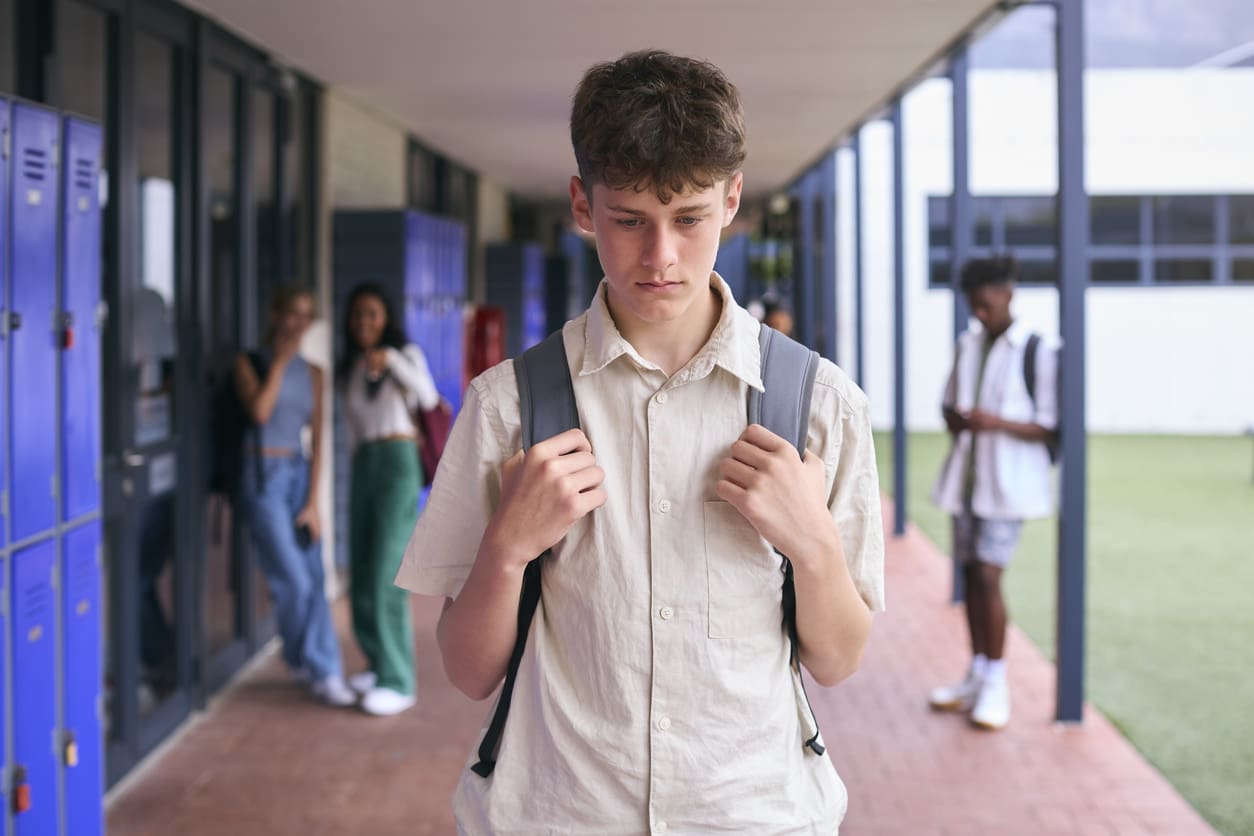
You’re a girl going through puberty, middle school, and you are looking at images of other girls on here that have been perfected through filters and other things like that. You’re looking at that, you’re comparing yourself. You’re like, “I don’t look this great, but I need to look this great.”
There’s a lot of anxiety about that. Just look at the number of very young girls who are buying skincare products. You have eight-year-olds going to Ulta Beauty buying skincare products. Why? They have perfect skin. It’s because of the stuff that’s being purveyed on social media.
Just look at the number of very young girls who are buying skincare products. You have eight-year-olds going to Ulta Beauty buying skincare products. Why? They have perfect skin. It’s because of the stuff that’s being purveyed on… Share on XWhen we look at the statistics of these students in surveys who say they’re satisfied with themselves, up to 2010 actually were going up. They’re feeling more satisfied with themselves.
In 2011, it nosedived down. It went from, like, 2011 for girls. It was, like, 67% of girls said they were satisfied, and now it’s down to like 57%. Boys have a very similar decline, just not as low. They started out higher, not as low, but the percentage change is about the same. How many close friends do they have?
In 2011, the percentage of students who said they have close friends was in the high 70th percentile. Now it’s in the mid- to-low 60th percentile. They’re changing real-life, face-to-face relationships that are meaningful because they’re face-to-face. They went from quality to quantity. Now they have lots of friends online, but they are not meaningful relationships.
Also predation. Girls are more likely to be preyed on online than boys, although we’ll talk about this scam that’s very prevalent where young, teen boys, not just young teens, but male young adults are being preyed on by scammers through sexual exploitation.
It is really complicated, a lot is going on here, but all these things have aggregated, rewired our children’s brains in a way that we can actually undo. It won’t happen immediately, but it’s something that I think that, again, we have to do it.
I’m just afraid that parents who are on the sidelines and not overly concerned about it because they’re thinking, “This can’t happen to my kid,” won’t do it until the point where the suicide rate is so high or the attempted suicide rate is so high that it cannot be ignored. When we have multiple children in a school attempting or committing suicide, those parents will stand up and say, “Something has to change, and I don’t want that to happen.” Hopefully we can turn the ship around before that happens.
You were saying that for one generation, there was this big shift, but for Gen Z, there wasn’t as much of that shift in this age group. Am I misunderstanding that or is Gen Z not…
Gen Z are born from 1997 to 2004 or 2005. It’s that range right there. They got smartphones and social media while they’re going through puberty. The older kids, the millennials did not have. They got the technology saying that they did not have mental health problems. What we’re seeing is every new generation of children who are being introduced to social media at an earlier and earlier ages, is just making the mental health outcomes even worse, but the Gen Z were the first generation.
It’s not just an American problem. They see this exact same thing in South Korea, the UK, Germany, every country of children that age exposed to this technology, the same time, same generation, same outcomes, very similar outcomes.
There are a lot of naysayers that are like I’m not saying it’s all because of that. You can’t say that the current mental health crisis is only because of social media. I think you can lay a lot of it at the feet of it and the phones, but I can’t say all of it there’s a high correlation. It’s not just an American problem. Australia is another one. It’s happening worldwide and it started in 2010.
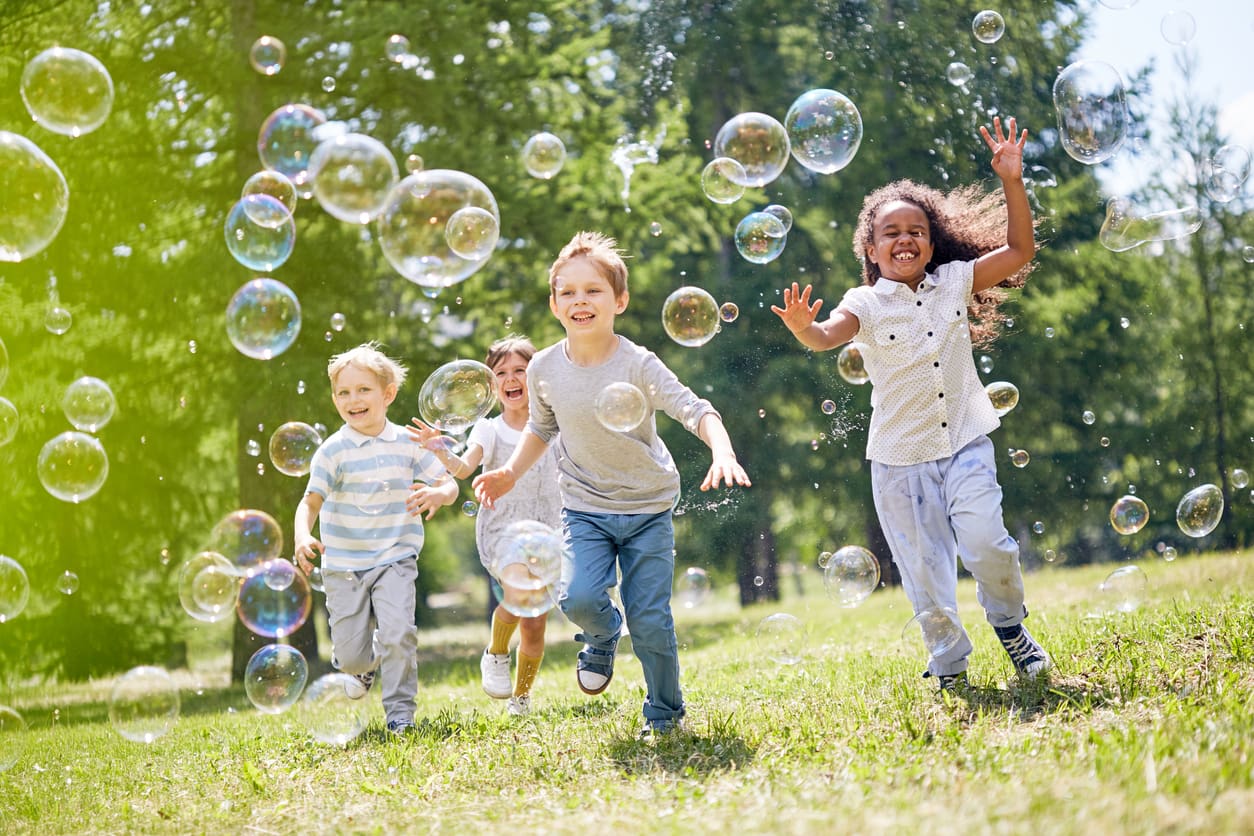
I think that generational difference makes it difficult. Because you and I, we’ll go out and play with our friends until the streetlights come on and then come home. It was to ride your bikes, build forts, beat each other up in person. It was in real-life interactions and you’re left to your own devices to figure it out.
Our parents, that generation, were pretty hands-off. I guess in the other component of this in Jonathan Haidt's book, Anxious Generation, he talks about the parenting shift. We went from my generation of parents who were just, like, coming back when the lights turned on. They’ll have no idea where we were. I remember I went to high school in Palm Desert and we have a car. When you turned 16, our generation, you wanted to drive. Our kids are driving much later, all the things happening later.
My buddy and I would jump in my car and we’d drive to Joshua Tree and we’d just camp out. My parents had no idea. I think they had a general sense I was camping out somewhere. They didn’t know where I was. There are no phones. Things changed radically, so we went from this hands-off parenting style to a very helicopter, fear-based parenting style, or the bulldozer parenting where they just push all the obstacles out of the way of their kid because they want their kid to have a very easy, relaxed life. But what they’ve done is the opposite.
You couple that with technology. We have kids who don’t know how to deal with adversity. If you’re a kid growing up in our generation, if you wanted to go on a date, you had to go look someone in the face and say, “Would you like to go on a date with me?”
I just think about all the anxiety that builds up prior to that. You’re thinking she might say yes, she might say no. You’re, like, playing it all in your head. Then, at the moment, you have to do it. Then you live with the outcome.
It could be that it didn’t work out well and there are some social consequences for you because she’s going to go around and say, “I told Clayton I was […],” and it gets around the school like Clayton got dumped on the first date or whatever.
Our kids don’t have that anymore, and that’s good. You need to learn that experience when you’re young in school or whatever, because it’s a safe place to crash and burn. Kids are never getting that now, and now they’re resorting to online relationships, which have zero stakes. There’s no downside to getting dumped online.
Now we have AI boyfriends and girlfriends, which are emerging. Now you can have a perfect online boyfriend or girlfriend who will never say no or anything to you. There’s no give and take. There’s no sacrifice to please another person in a sense that I have to put my wants a little bit behind this other person to have this relationship. You need to learn how to do that. You can’t have a successful marriage, for instance, if you don’t do that.
There are all these kinds of things that are happening here. Parenting style today has really created this situation to some degree. We have kids who are not really well prepared. Ironically, parents are really scared. The reason why parents are giving their children phones at an early age—I’ve talked to tens of thousands of parents. I’ve asked a lot of them. I’m in a first grade class. I’m teaching cyber safety to first graders. Actually, we do K-3.
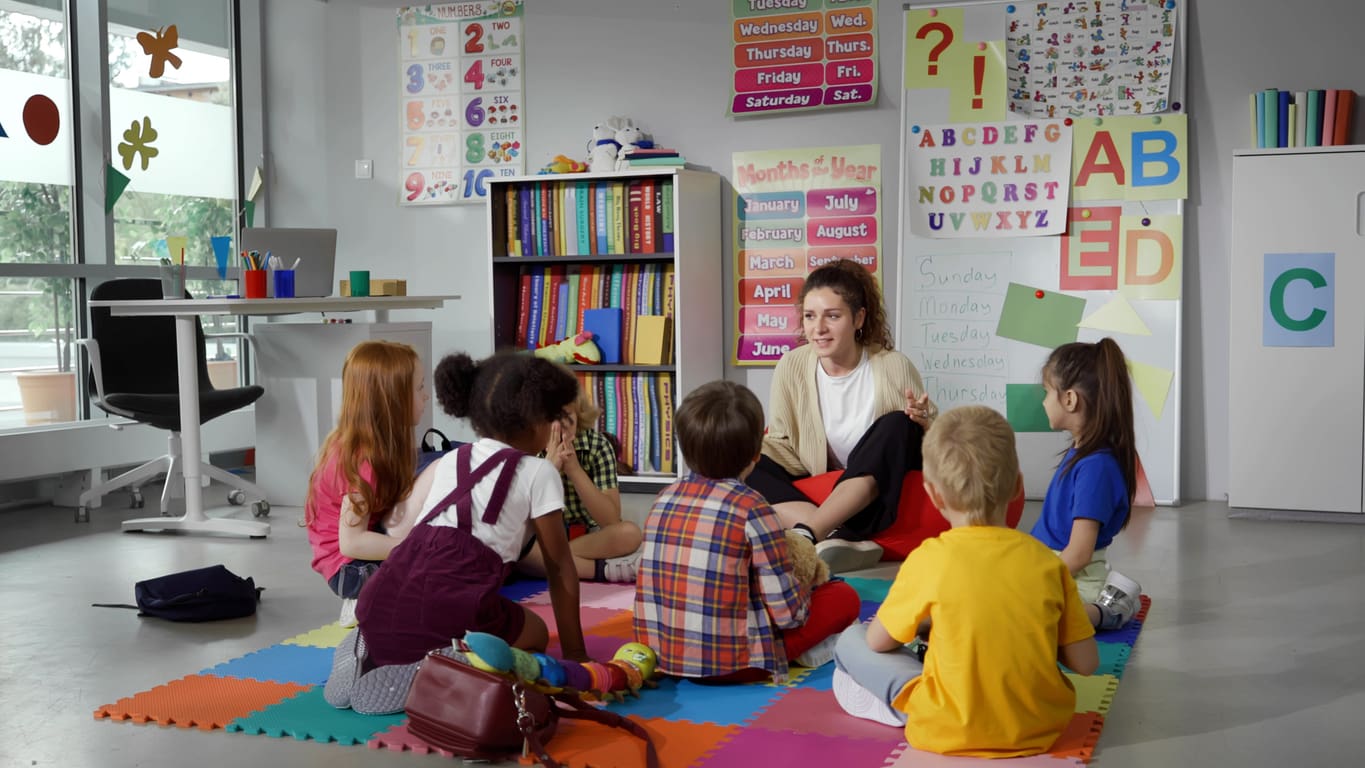
First graders are seven years old-ish, something like that. Somewhere in that range.
Usually, we do a block, K-3, because it’s the same presentation for that whole group. It’s very fun and light, and we’ve got cartoons and stuff. It’s very age-appropriate. But I started off with a presentation by saying, “Raise your hand if you have a phone.” Half the hands go up. Half the kids are there. Then, “Raise your hand if you have TikTok or something,” and then, like, half those hands go up.
I’m asking parents, “Why are you giving your kid, your first grade or whatever, a phone?” And they’re afraid. They’re afraid that, “I need to be able to contact my child anytime during the day because of their safety.” I’m like, “If you’re taking your child from home to school and then picking them up from school and bringing them home, why do you need a phone in that situation? It’s not like they’re out wandering the fields after school or something.”
Because if you need to talk to your kid, you can just call the front office. They’ll find your kid. Parents will say basically two things. They’ll say one, “I’m worried about my child being abducted,” and the other one is school shootings.
Then I asked parents where we should put our concern. What should be the focus of our concern? Are we concerned about the possibility of anything bad happening to our kid? What is anything above zero, something we need to be overly concerned about? Or is it only the things that are really in the threat matrix for our kid right now?
Only about 100 kids a year get abducted by strangers and we have, like, 72 million children in the United States. The chances of your child being abducted by a stranger—mostly they get abducted by family members.
Stranger danger.
It’s like 0.00006% of kids. Then you look at school shootings? Like in the last 20 years, only 215 children have been either injured or killed in a school shooting, so that’s like 0.0004% or something like that percent of kids.
If you look at the number of kids who are suffering anxiety, depression, who are committing suicide, who are hurting themselves. We’re talking about things that are, like, tens of thousands percent more likely to happen to your kid and most parents, I think, probably know a kid who’s seeking mental health help, or maybe their kid is because of anxiety, depression, or something else. So we’re giving them devices for something that is highly unlikely.
If this ever happened to your kid and you’re watching this podcast, you’re maybe chucking something at the screen right now, I’m not saying that this doesn’t ever happen. If it does happen to your family, it’s beyond devastating. God forbid it would ever happen to anyone, but I’m talking about, like, the average family. This is really not something we need to be concerned about.
The chance of your child being victimized by a stranger is so low. It was way more dangerous in the 80s when we were kids then than it is now. A child is more likely to be physically injured, sexually abused, or murdered in their home way more likely than at a school or outside their own home. If you’re not the kind of parent who’s going to do that to your kid, you don’t have a lot to worry about, frankly.
What you do need to worry about is their mental health. We’re giving them phones because we’re worried about this thing that is really not a thing, and inadvertently opening up a world to our kid that should never have been available to them. Now they’re being victimized in all sorts of ways that wouldn’t have been available otherwise.
You talked about undoing this. I can see two levels of undoing this, and you’re probably more experienced in talking about one. There’s the stop, prevent it from happening going forward, but then there’s OK, the people who have now been exposed to all this growing up as they become adults or later teens trying to undo what has already happened to them. Which undo do you want to talk about?
I think in a perfect world, what I would like to see happen is if you’re a parent and you haven’t given your child a phone or social media yet, I would say do not give your child a smartphone until they’re in high school.
If your child’s in middle school and you’re like, “You know what? I have a legitimate reason for my child to have a phone,” like they ride their bike to baseball practice after school. OK, I get it. Get them a non-smartphone. Give them a flip phone. Give them an Apple Watch or something like that where they can communicate with you, but not have access to apps on the Internet and have a phone or camera looking at them.
Then when they’re in high school, you can give him a smartphone and then I wouldn’t give him social media until sometime later. I would recommend 16, although that’s going to be a tough sell for when a kid gets high school. If you give your child a smartphone, you must put an app on your child’s phone that will help regulate screen time for them because the amount of time they spend on devices also impacts their mental health, and then also something that might alert you if something dangerous is happening with your child.
The app that we recommend at Cyber Safety Cop—in fact, my instructors who have children are using it on their children’s phones—it’s OurPact. They’re a California company that cares about kids. Everybody there are parents. It works on iPhones, which is awesome because there are other apps out there that you can install on an iPhone, but it struggles because the iPhone’s operating system is not very friendly to these types of apps.
OurPact uses the device management part of the operating system, so it’s really seamless. It’ll even grab screenshots of what your child’s doing on their phone, including Snapchat, and use optical character recognition, run that through a database if it sees some words in there that are problematic, and send you a notification. That would have saved a lot of kids that I know. As soon as someone says, “Hey, send me a nude,” or whatever, that would have gotten flagged to that parent.
Then during the school day, the kids should not be on phones. All schools should have a policy that no phones are out bell to bell. But if your kid has a phone using OurPact, you could actually shut down every app on their phone, except their ability to call or text. That would help.
At night, that device does not belong in their bedroom. So no technology in the child’s bedroom, especially after lights out. I don’t think they should be in their bedroom, period. You put an Xbox in a kid’s room, you’ve increased their time on the Xbox statistically by more than 50%. Put it in a public area of the house where you can drop in and check on things.
You put an Xbox in a kid’s room, you’ve increased their time on the Xbox statistically by more than 50%. Put it in a public area of the house where you can drop in and check on things. -Clayton Cranford Share on XBut at night, when that light goes out, leaving that phone or that device, whatever it is, in their bedroom, increases anxiety, increases their likelihood to do something inappropriate, sending nude images, looking at pornography, all those things shoot up after, like, 11:00 PM on these devices. That’s an easy fix.
The other thing too is I recommend visiting my website cybersafetycop.com. My book, Parenting in the Digital World, calmly walks you through how to talk to your kid about this stuff. A lot of this is how to talk to your kid. Talk to your kid in a way that’s not intuitive because our parents’ intuitive way of talking to kids is telling them what to do. Talking down to them and saying, “This is what you have to do, blah-blah-blah.”
When you give your kid a phone, they have options. They don’t have to listen to you. Really what you want to do is you want to recruit them to be on your side. One of the things I do in my presentation is I give some parents tools on this and the tools come from when I was a hostage negotiator.
I was a hostage negotiator for the Sheriff’s Department and parents laugh because when you’re talking to your kid about screen time, it does feel like a hostage negotiation to some degree. But in a hostage situation, how do we get somebody to come out of a house? They’re barricaded inside of a house. The police are surrounding it.
How do we get that person out? It’s not by telling them, “Get out now”—that doesn’t work. They have options. We do it by building a rapport, trying to understand where this person is coming from, and listening to them. Then once they feel like you’re trying to understand them, they start opening up to you. Then you start giving them options like, “How can we figure this out together?” That’s the goal.
Your kids are like, “Hey, I need to have Snapchat to have a relationship with friends at school.” My recommendation is not to give your child Snapchat until they’re in college. I’ve just seen too much. I’ve written too many search warrants for Snapchat. I’ve seen too many kids crash and burn on Snapchat. Never had a parent say, “Give my child Snapchat; that was a great choice.” Or screen time, whatever it is. “I want to be on Xbox all day today or whatever.”
If you just say, “No, you can’t have it,” they may try to find workarounds to have it without you knowing. Really that conversation is, “Well, tell me why Snapchat’s important to you. Tell me about what kind of things you would like to do on Snapchat? Teach me about Snapchat. I’d like to know.” Now you have a kid talking to you about Snapchat. Then you start with, “Are there any downsides to Snapchat? What do you think the downsides are?” Just having a conversation with your kid about this.
Eventually, you can come to some kind of accommodation on how you want to do this. Now, when it comes to Snapchat, I’m not an accommodator. I just said you can’t have it. For most things, we can do this, especially when it comes to screen-time limits.
The problem with Snapchat or something like that is that it’s not manageable. If you don’t know, you can take images or videos on Snapchat. You can share it with another person and then those images can disappear, which gives kids the notion that this is private and safe.
Snapchat facilitates a lot of stranger interaction with your child. There’s this thing called Quick Add. Top right corner of Snapchat, you can open that up and it’ll recommend people who are friends of friends and farther out. You can easily add them.
What we have is kids talking to lots of strangers. We have a lot of drug dealing happening on Snapchat. Drug dealers are blasting messages out to kids on Snapchat saying, “Hey, we’ve got a great deal on these pills,” which disappear off that phone. But if you want to directly message that person, you can set up a drug deal that literally gets handed off at your doorstep because that person is in your area.
We now live in a world where the counterfeit pills that the DEA has confiscated in 2022, 60% of them are lethal. Talk about something you should be concerned about, parents.
The number-one cause of death for your teen is drug overdose. The number-one cause. The number-one app to put drugs in your child’s hands is Snapchat. -Clayton Cranford Share on XThe number-one cause of death for your teen is drug overdose. The number-one cause. The number-one app to put drugs in your child’s hands is Snapchat. A lot of kids aren’t regular drug users. They’re just experimenting. They’re like, “Well, this is a Percocet. It’s a pharmaceutical. How bad could it be?” It turns out to be counterfeit and it’s got some fentanyl on it and it stops your kid’s clock the first time. That’s the thing we should be concerned about as well as their mental health.
There’s always some new app out there. My website has reviews for the big apps that are out there. If you subscribe to my newsletter, we’ll send you an email when something pops up that you need to know, but the relationship piece with your kid is huge. At the same time, as a parent, you need to know why you need to say no to Snapchat. You need to know why. You should be saying no to Discord, which is another really popular app for kids, especially boys who play games.
Then you have the open internet, which can expose your kid to pornography, which is also changing our kids in ways that parents don’t really understand. As well as just a lot of stranger interaction that can lead to the sexual exploitation of our kids, which is right now at epidemic levels.
Gosh, not an up episode. I think part of it is that we can’t avoid this. We need to talk about it. Parents need to talk about it with their kids and can’t just stick our fingers in our ears and pretend it’s not a problem, or it’s not going to impact my kid.
This can’t happen to my kid is the famous last words. I tell parents, every parent who goes to my presentation, they all walk out saying the same thing. They say, “Man, am I glad there was no internet when I was a kid.” If you think you wouldn’t have done a good job, why do you think your kid could. Your kid is you with the Internet.
Then the other one is like, “Everybody should have been here. This should be mandatory for every parent to hear because parents aren’t going to these presentations because it’s an after-school event and they’re tired, and they got home from work or whatever.” They’re like, “How good is it going to be anyway? I’ve been to other ones, they’re that great, whatever.”
Not only is our presentation informative, you’re going to learn what you need to do. We don’t, we don’t just horrify you. We actually give you tools. But it’s presented in a way, like our presenters are professional presenters, and we tell a lot of stories. Parents in my presentation, they’re laughing, they’re crying, they’re identifying with these stories, and they come out changed. I think that’s really our goal. We were looking to change these parents.
You can’t change a kid into a good decision-maker. You just can’t. You can nudge them towards making better choices, but their prefrontal cortex is not fully developed—the part of your brain that pumps the brakes on a bad idea. That part of their brain is not going to kick in until their late 20s. I have two boys, 21 and 23. They’re not making good choices, and they’re adults.
Your sweet little teen who, face-to-face, would never do the things that happen online that they would casually do online. They would never do it in a million years and it’s because the technology removes the sense of consequence.
One of the things when we talk to students is we try to get them to connect in their adolescent brains, the real world and digital world are the same world. They feel different, and that’s the problem.
Children aren’t using the decision-making part of their brain, the rational cognitive part of the brain. They’re using their limbic part of the brain, the fight or flight, the emotional center of their brain. Therefore, they do things that feel real or feel good that excite them.
That’s why the risk taking. That’s why we do things when we were a kid and as an adult, we’re like, “Why did I ever do that? That was crazy.” They’re doing what feels real.
In the presentation with the students, I lay out a scenario for them where I say, “Look,” I go, “You and your friends are hanging out at In-N-Out getting a hamburger or whatever. Some adult man walks up to you and starts chatting you up and says, ‘Hey, where do you go to school? What’s your name? Can I look at your phone? I’ll look at the pictures of you and your friends on your phone.’”
I’m like, “Is anybody going for that?” And all these kids are, like, howling, “No,” whatever, “stranger danger.” I’m like, “OK, but when you’re online”—and I’ve already asked these kids, how many followers do they have. It’s like maybe talking to middle-schoolers, the average kid has like 300 followers. Then I ask them what percentage of those followers are people you do not know? It’s going to be 80%–90%. This is what they’re saying. I’m not putting numbers in there. I’m like, “What percentage?” They’re like, “90%.”
“How did you let them in? The stranger that you didn’t know?” It’s based on the image. The profile image, if it looks like someone I know or it looks like someone my age, is what I should say, and they already follow someone I do know, a friend of mine online. They’re getting in. That’s how 90% of those people are strangers.
I said, “OK, you’re telling and then what are you sharing online? You’re sharing who you are, where you go to school, pictures of you and your friends. The same thing that guy at In-N-Out was asking for that you were not interested in.” They’re like, “Yup, that’s correct.”
“Let me just make sure I get this straight. You’re saying that you’re letting people in your social network based on an image that could be fake?” And they all admit it could be fake. “That person could be an adult, and you’re sharing the exact same information that you said was not safe to share with that adult stranger at an In-N-Out. Could one of those people be that person?” They’re like, “Yes.” I’m like, “Does that make sense?” I’ll have a room of, like, 300 kids in middle-schoolers, high-schoolers, dead silent and they’re like, “No, it doesn’t make sense.”
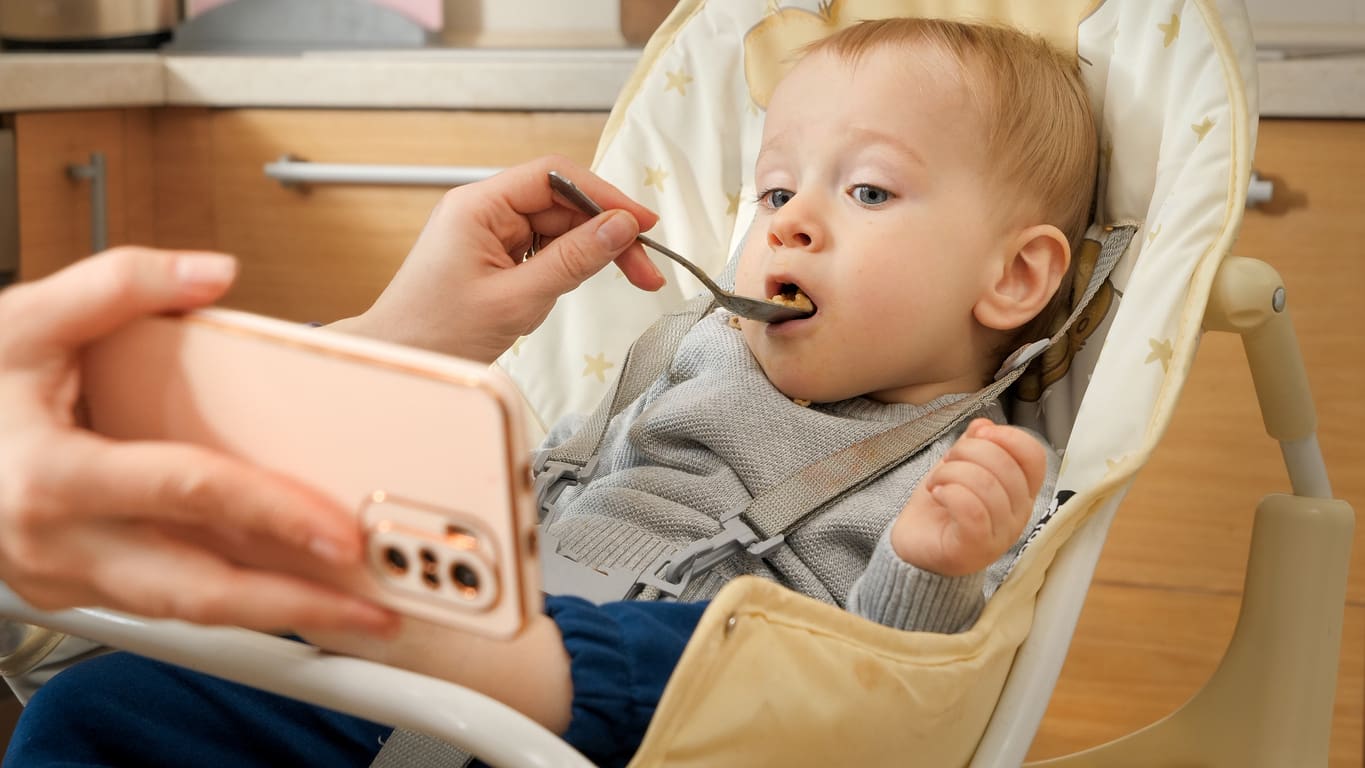
I go, “Are kids getting hurt?” And they’re like, “Yes.” I go, “Is this a problem?” And they say, “Yes.” They admit everything and maybe again, in that moment when they’re there and they’re online, they’re thinking this can never happen to me. It’s just somebody. They’re so far away. It’s a screen to a screen. There could be miles between me and this other person. They’re not thinking about how real it is.
That’s the problem. We’re dealing with kids who think this way, which is super normal. If it was you and me at that age, we would have done the same thing if we had the access. But the consequences are really, really horrible and parents aren’t finding out about it until their children’s life in their homes implode because something really sad has happened to their kid.
That’s awful. Again, if people want to find you online, what’s the website again?
Cybersafetycop.com, and we have a ton of free stuff, handouts for parents, worksheets for kids. You can find out how you can bring me or one of my instructors to your kids’ school. We have a free membership and a paid membership you can sign up for. There’s online learning for you as a parent, how to be a better digital parent, and also online learning for your child, how to be safer online.
We also cover in our presentations, and also online, on vaping, marijuana, and fentanyl, which is another huge issue at school. Parents may have questions about that. Please take a look at that and you can always email me, [email protected], if you want more information. There’s just a lot here and we’d only scratch the surface of it.
I just want parents to know that this is something we can manage. We just have to think about it differently now based on what’s happening. If you’re able to do this before your kid has a phone, then your life’s going to be much easier. But if your kid has a phone, it’s not the end of the world. Don’t try to do everything at once. Take little baby steps. Talk to your kid using something like OurPact.
In fact, if you go to OurPact, maybe I’ll give you the link. I have a discount code for parents if they want to try it out. You have 14 days for free. And with my discount code, you get 10% off. It’s like the cost of going to Starbucks once a month. It’s hardly anything and it helps keep your kids safe. To me, it’s a no-brainer.
Sign up for my newsletter, and we’ll keep you informed. Everybody who’s watching this, I really pray and hope that you have peace in your home, and that if these are struggles for you, please reach out and ask for help.
Clay, thank you so much for coming on the podcast today.
Thank you.
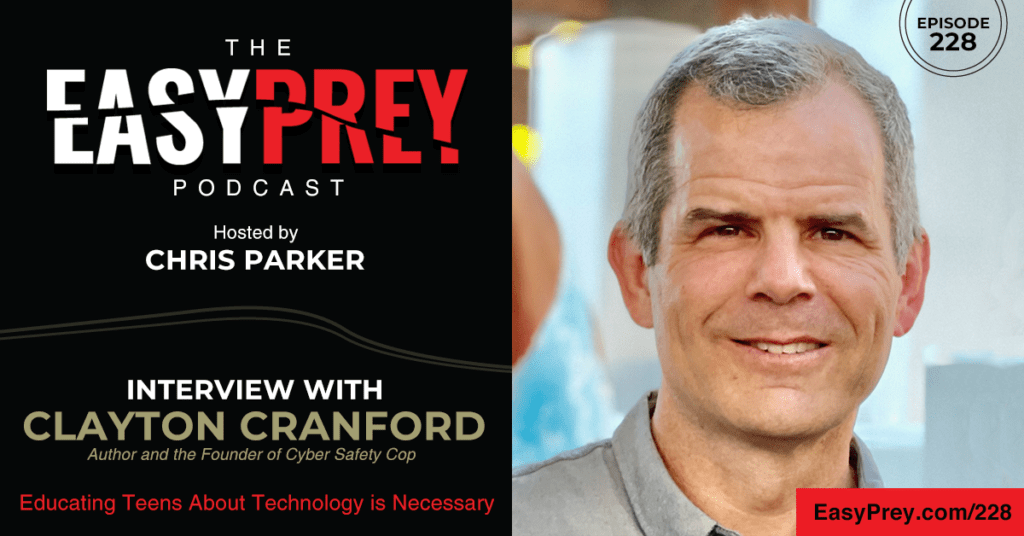
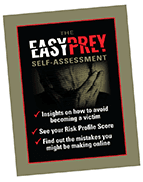
Leave a Reply